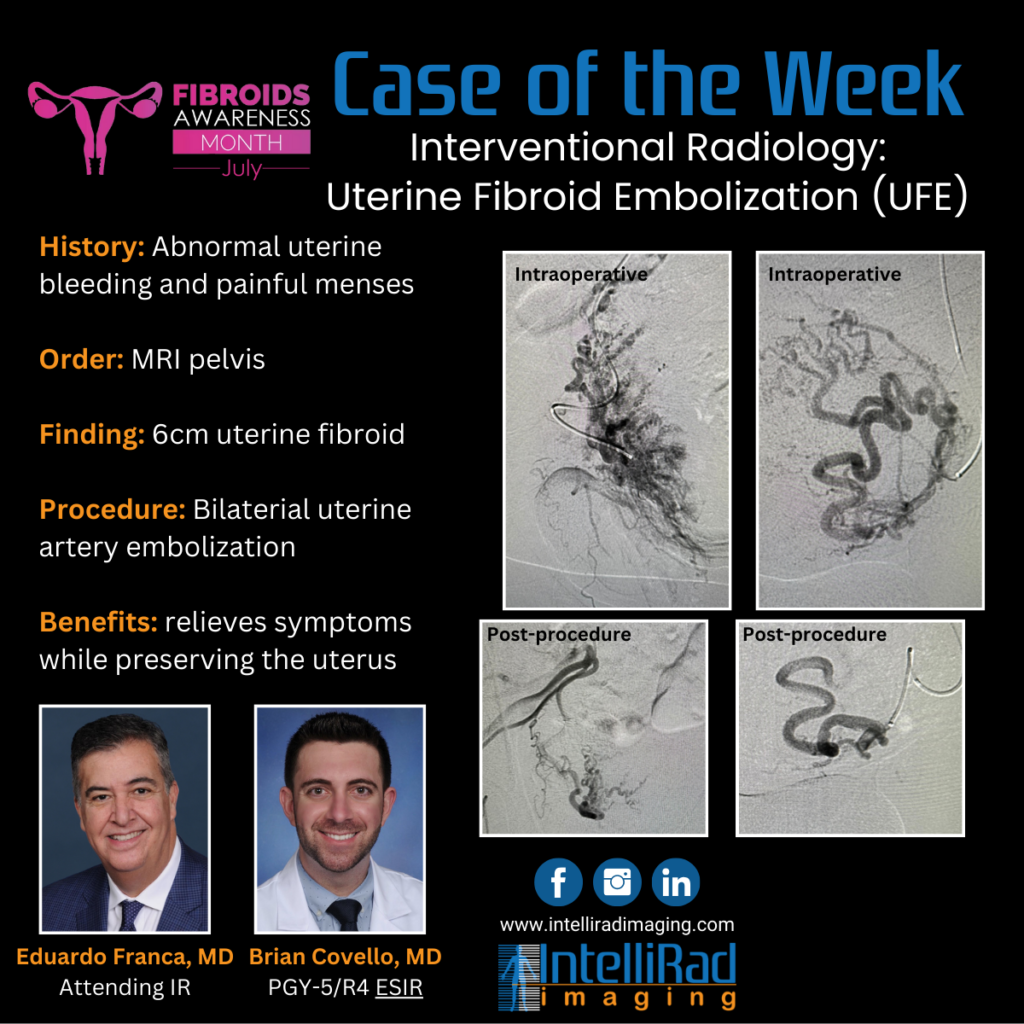July is Fibroids Awareness Month so we are featuring a uterine artery embolization (sometimes also called uterine fibroid embolization) as our case of the week. 3 out of 4 women will be affected by uterine fibroids by the time they are 50 years old, but 72% don’t know they’re at risk.
A 48-year-old female referred by her gynecology physician to our group for a potential uterine fibroid embolization procedure. The patient was experiencing abnormal uterine bleeding as well as heavy menses with painful cramping. Prior endometrial biopsy was negative. During our clinic visit with this patient, our nurse practitioner, Kristine Lopez, APRN, explained to the patient that a UFE procedure entails injecting tiny particles into the blood vessels that lead to the uterus. The particles cut off the blood flow to the fibroid and cause it to shrink over time. Recent MRI imaging on the patient showed a large intramural fibroid measuring approx. 6 x 6 x 5cm in size. This procedure is a minimally invasive procedure that entails inserting a wire into the arm and guiding it through the abdomen to access the uterine arteries.
Under moderate sedation, Dr. Brian Covello, a fourth year resident on the Early Specialization in Interventional Radiology (ESIR) track, and Dr. Eduardo Franca, attending interventional radiologist, performed a particle embolization of the left and right uterine arteries. Repeat angiogram after embolization demonstrated distal stasis without forward flow to the fibroid. The patient tolerated the procedure well. There are no immediate post-procedure complications. The patient was admitted overnight for pain management.
For more information about scheduling a consultation with our interventional radiology clinic for a uterine fibroid embolization, please visit our clinic referral info page.
The Society of Interventional Radiology (SIR) has published a lot of information about fibroids and their treatment options. Read the recent report by SIR.

